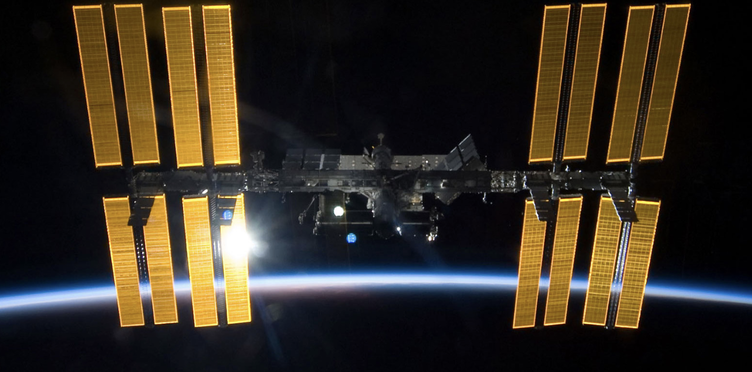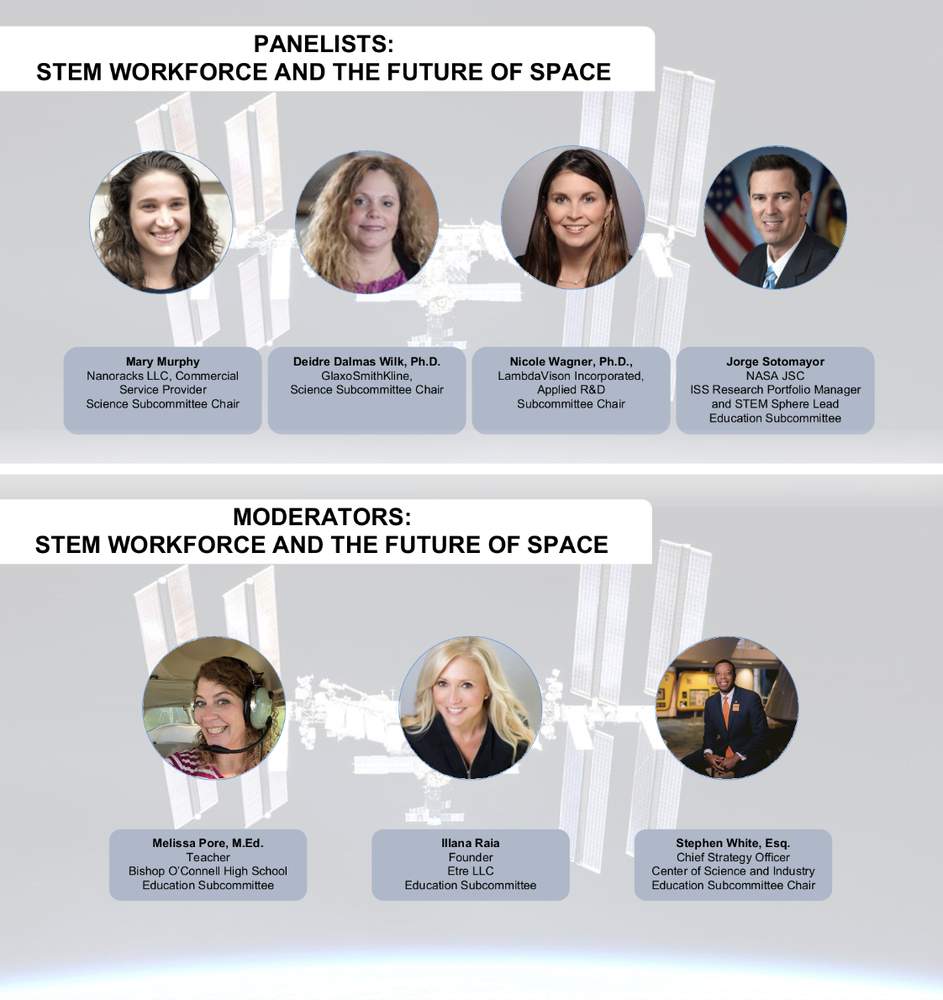Space is Made When STEM Leaders Inspire Tomorrow's Workforce
Last week leaders in science and engineering gathered in Washington, DC for the 2023 American Society for Gravitational and Space Research (ASGSR) Conference, and the next generation was watching.
Self-described as “a forum for high quality discovery-based, exploration-enabling, space biological and physical science research, technology, and training the next generation of scientists,” ASGSR offers a deep bench of resources and role models for tomorrow’s STEM stars. With members drawn from academia, government, the nonprofit sector and private industry, attendees of the 39th annual conference found themselves focused on a common issue: “how living organisms and physical systems respond to gravity (e.g. low-gravity, hyper-gravity, etc.).”
As a member of the International Space Station (ISS) National Lab UAC Educational Outreach Subcommittee, I helped moderate a panel entitled STEM Workforce and the Future of Space, and I was fascinated by the speakers’ remarks from the outset.
After introductory remarks by Laurie Provin, Director of Strategic Engagement at the ISS National Lab, and enlightening updates by ISS National Lab CEO Ray Lugo and UAC Chair Doug Matson, Education Outreach Subcommittee Chair Stephen White and fellow subcommittee member Melissa Pore led off the panel with the following query:
What does STEM workforce development mean to you?
A quiet hum started in the audience as the panelists picked up their mics, and then the wisdom began to flow:
Nicole Wagner, Founder/CEO of LambdaVision and the Applied R&D Subcommittee Chair started, noting that STEM workforce development is no longer just for mathematicians or engineers; anthropologists and medical experts are now joining her teams. “Keep your eyes and minds open,” she advised the next generation of STEM workers. “You never know where you’ll wind up.”
“[The acronym] STEM does not mean pick a single letter,” added Heath Mills, Chief Scientific Officer at Rhodium Scientific and Chair of the Technology Demonstration Subcommittee (whom we were lucky enough to have join the panel at a moment's notice), emphasizing the need for an interdisciplinary workforce. “Get out there and explore,” he urged.
Mary Murphy, Director of Programs at Nanoracks and Chair of the Commercial Service Provider Science Subcommittee chimed in, encouraging junior employees to “ask yourself where your skills are most useful.” Tomorrow’s workforce needs to cultivate awareness as to what is needed in the community, she explained. “You need the full tool set.”
“And,” continued Deidre Dalmas Wilk, Scientific Director of US Investigative Safety within R&D at GlaxoSmithKline and the Science Subcommittee Chair, “you can’t do anything alone.” A smart STEM workforce takes collaboration, she concluded, and as I looked across the panel lined with engaged subcommittee chairs, her words rang true.
“From the NASA perspective,” volunteered Jorge Sotomayor, Research Portfolio Manager, International Space Station at NASA Johnson Space Center, “we want to inspire the next generation.” Whoever is going to Mars in 20 years, he told us excitedly, that’s who NASA is looking to embolden.
Image from ISS National Lab
How will the space industry embolden the next generation? The next question from White and Pore hung like a challenge in the air.
With resources and role models, said Murphy.
And ideas that come from unexpected sources added Dalmas.
By looking towards 2030, stated Mills, and empowering that curious seventh grader now.
“By being part of what’s next.”
And there it was.
In the space of an hour a blueprint was sketched and a path extended.
Leading the Q&A that followed, I heard astute questions from the audience about workforce programming, budgeting, and plan execution, as well as early career questions coming via social media from STEM students in the US and Canada:
When did you know that a career in the space industry was possible for you?
How is medical research being advanced aboard the ISS?
What’s the coolest piece of research you’ve seen this year?
Is this your dream job?
And panelists answered both on stage and in conversations following our session, proving in real-time that scientific inquiry is dynamic and ongoing.
What will jobs in the space field look like in 10 or 20 years? Who can say? Will tomorrow’s STEM workforce be ready? Armed with role models like these and resources from those companies that attend and sponsor ASGSR, you’d better believe it.
I cannot wait to see what's next.
Looking forward,
Illana
ÊXTRAS: Three additional places to find top-tier STEM education resources you won’t want to miss: ASGSR Educational Resources covering biology, fluid dynamics, materials science, and more; Lesson Plans directly from ISS Space Station Explorers; and a series of higher level Research Guides from the ISS National Lab.






